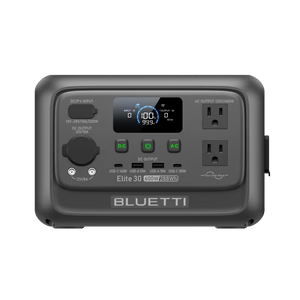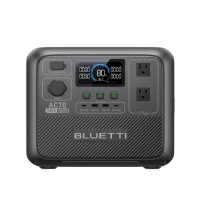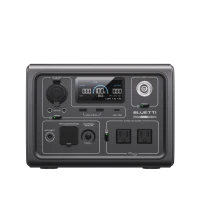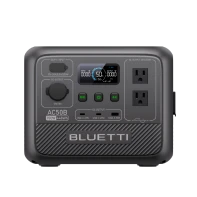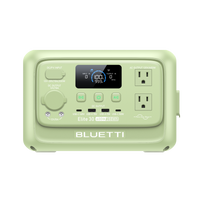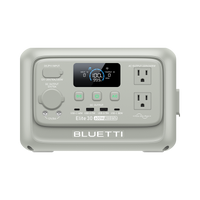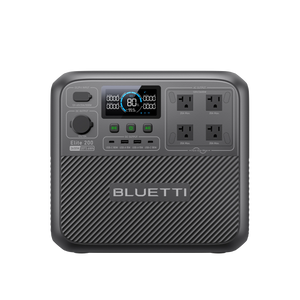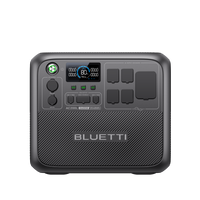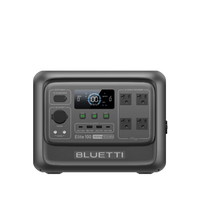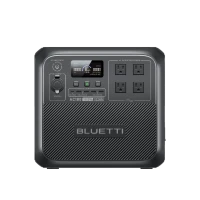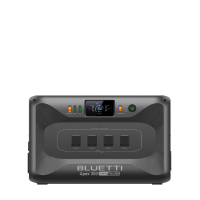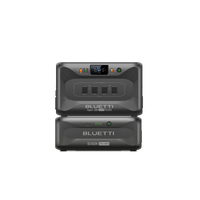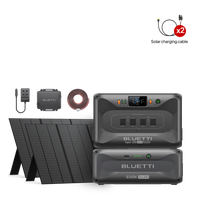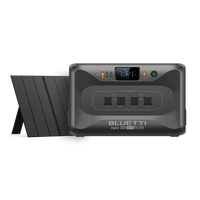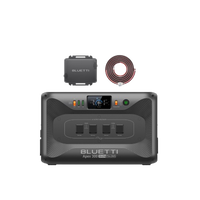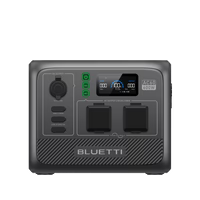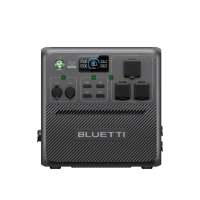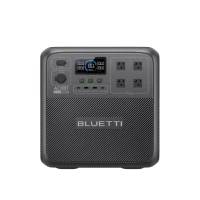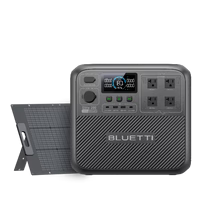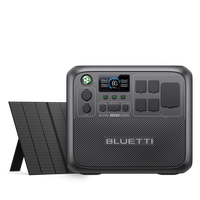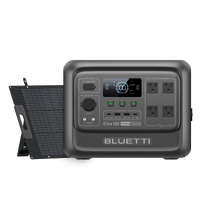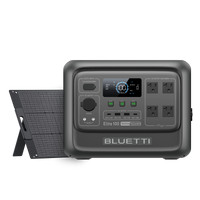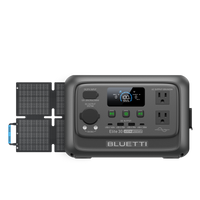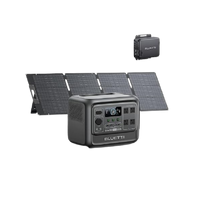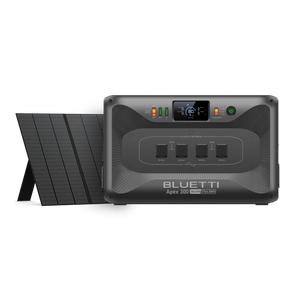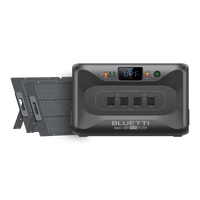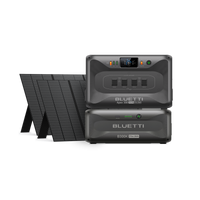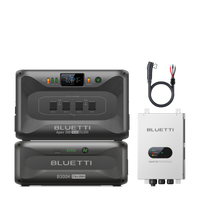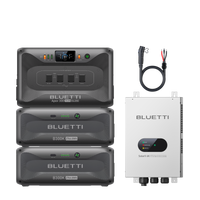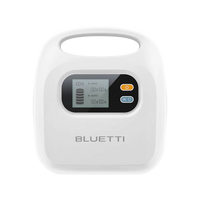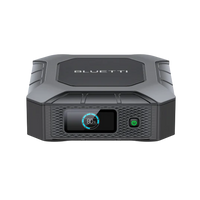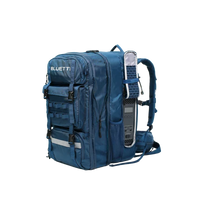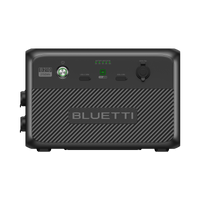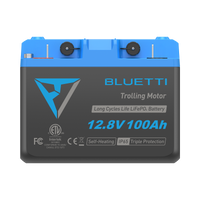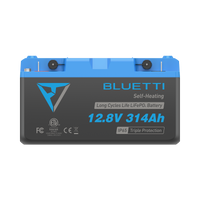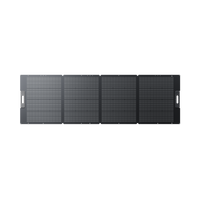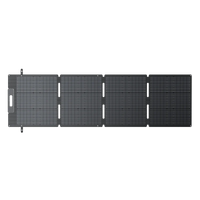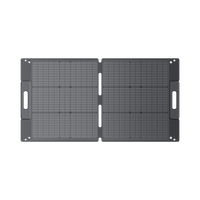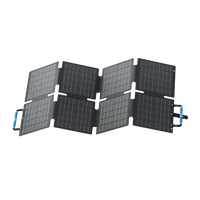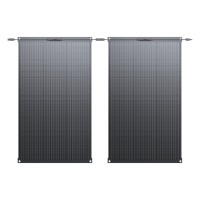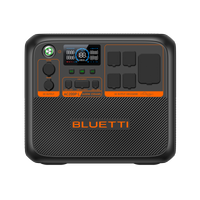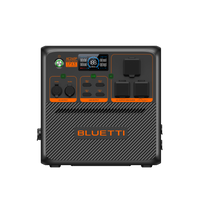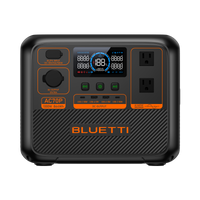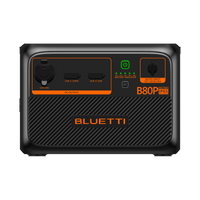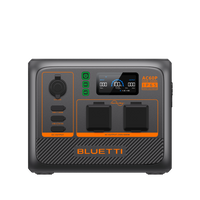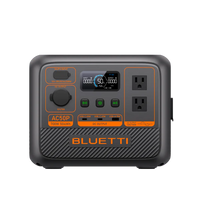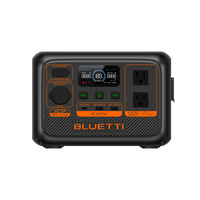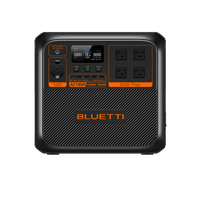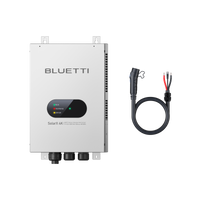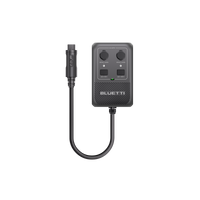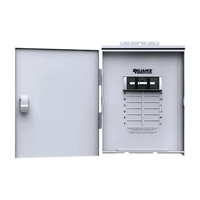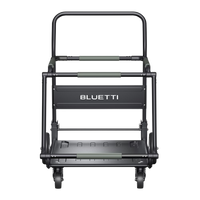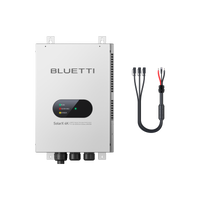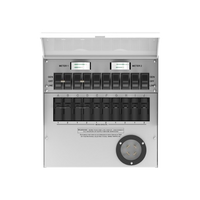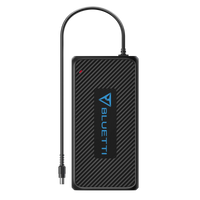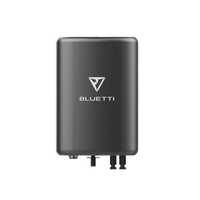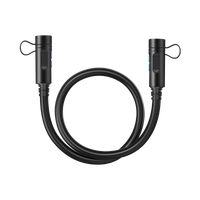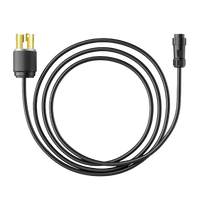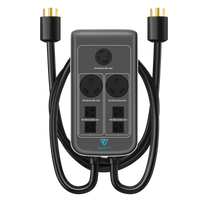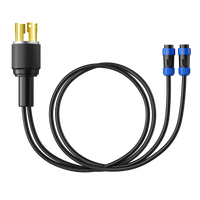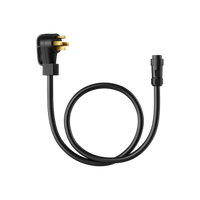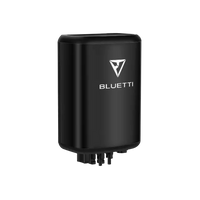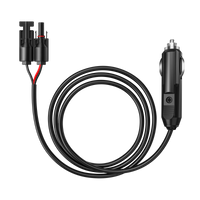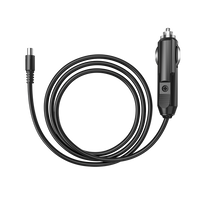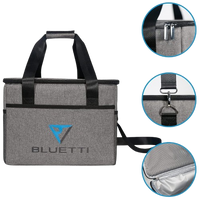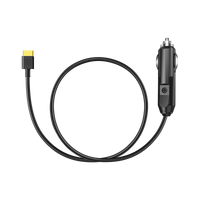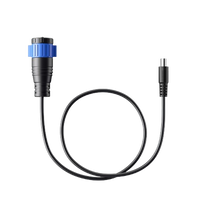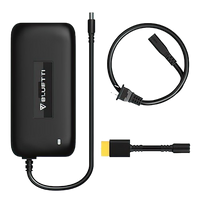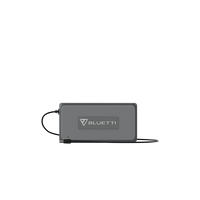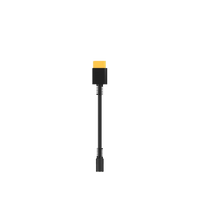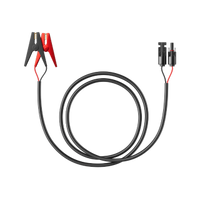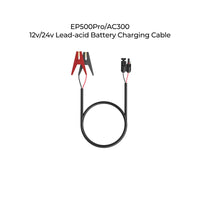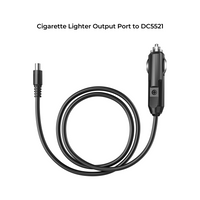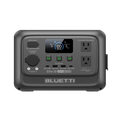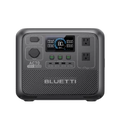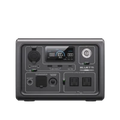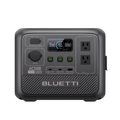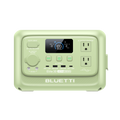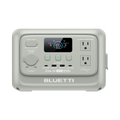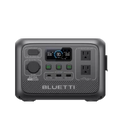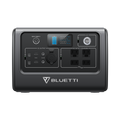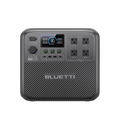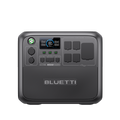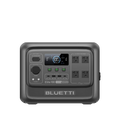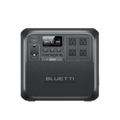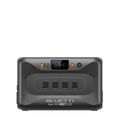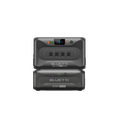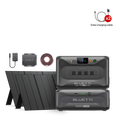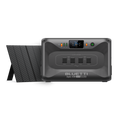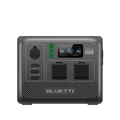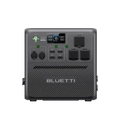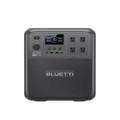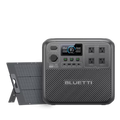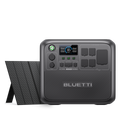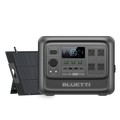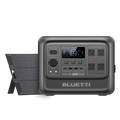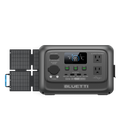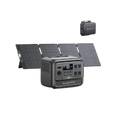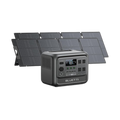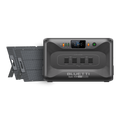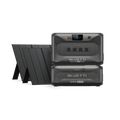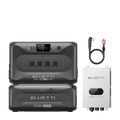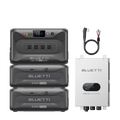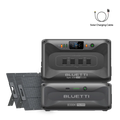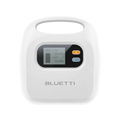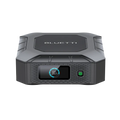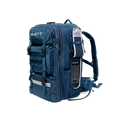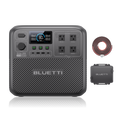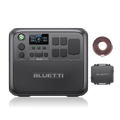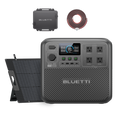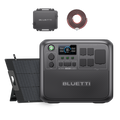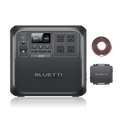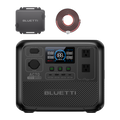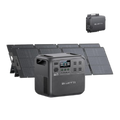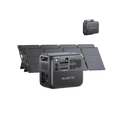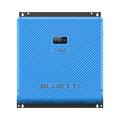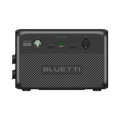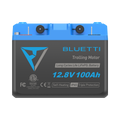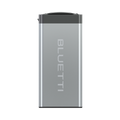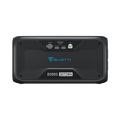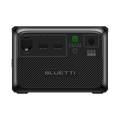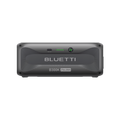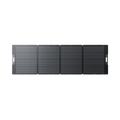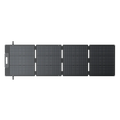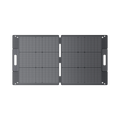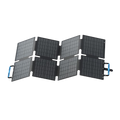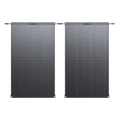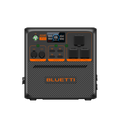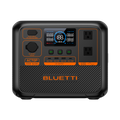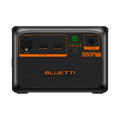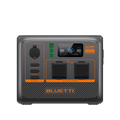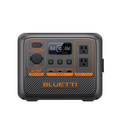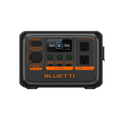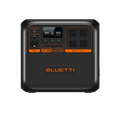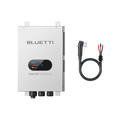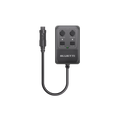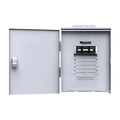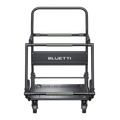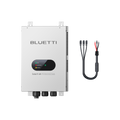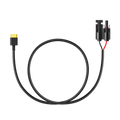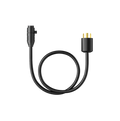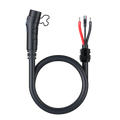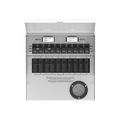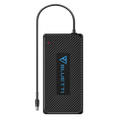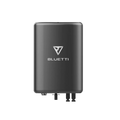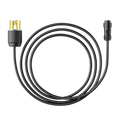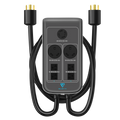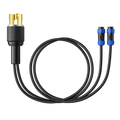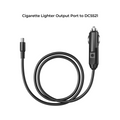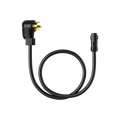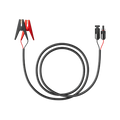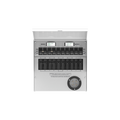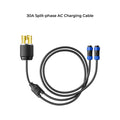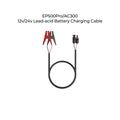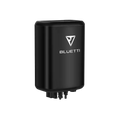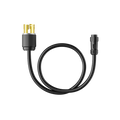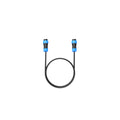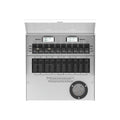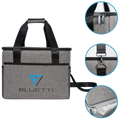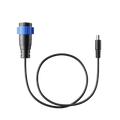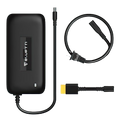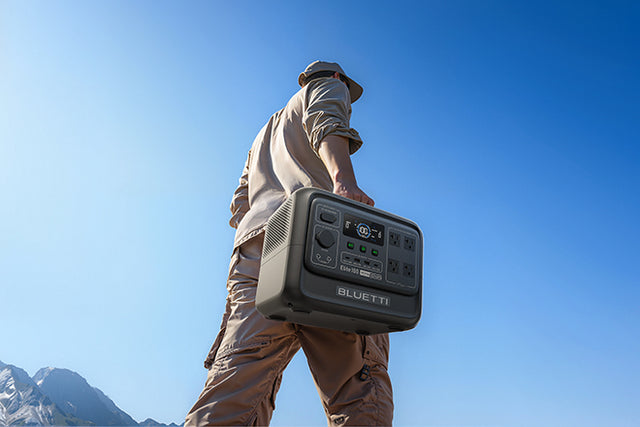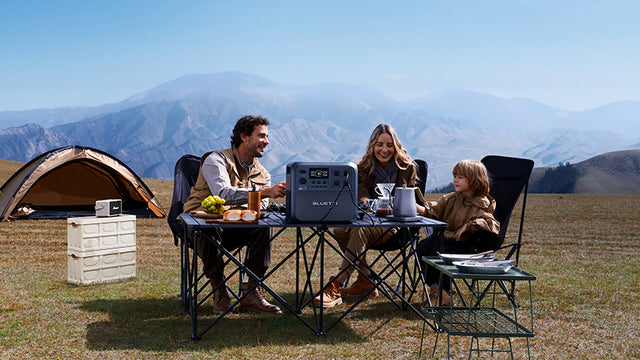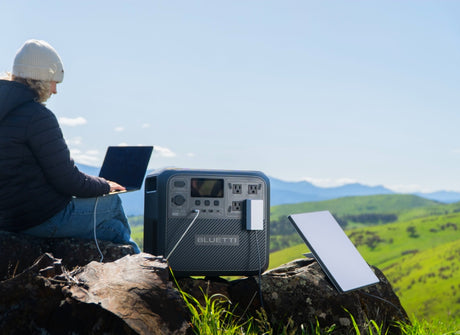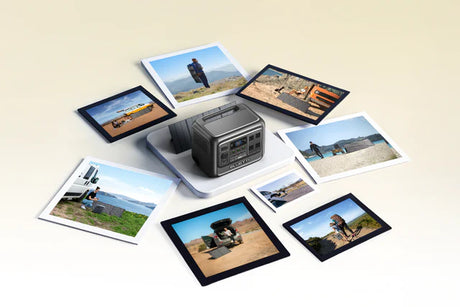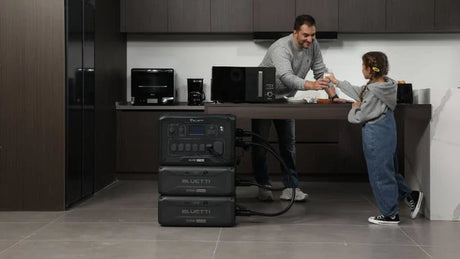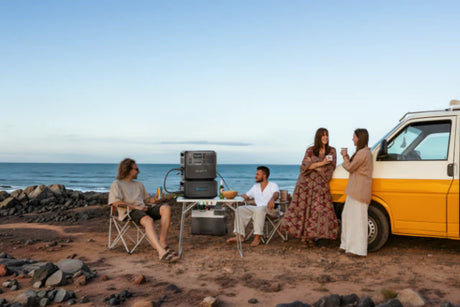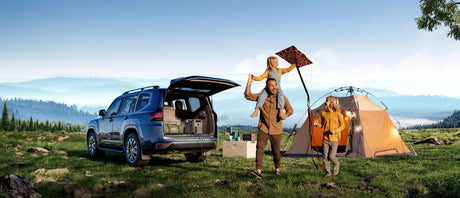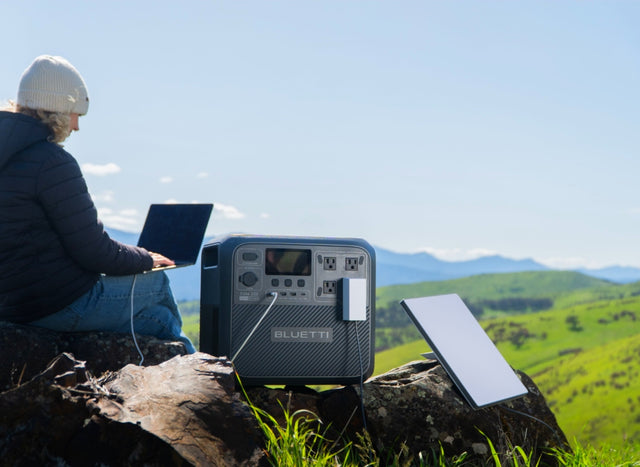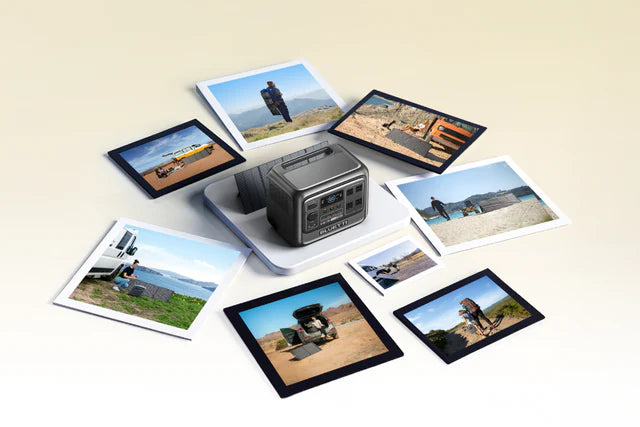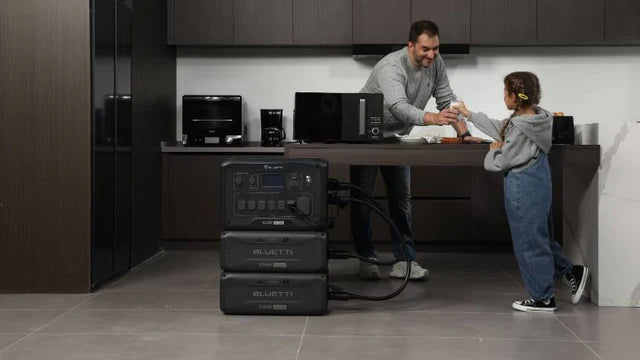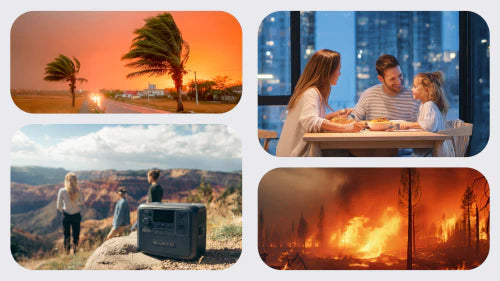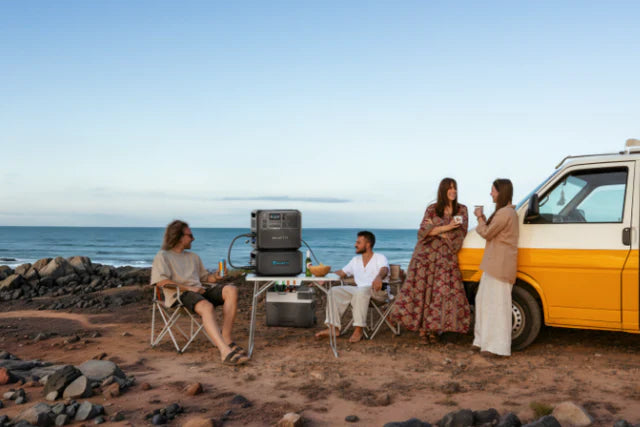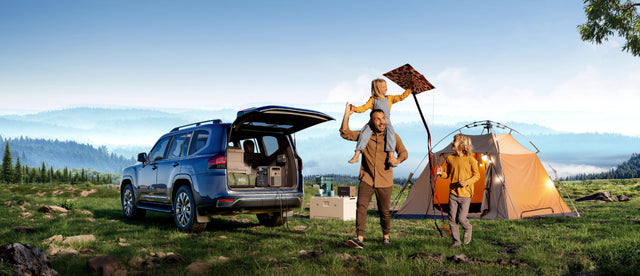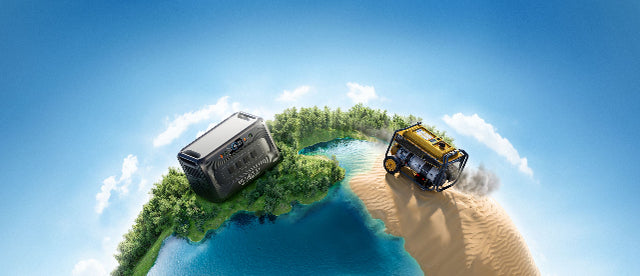It is winter, and you always had your plans about stocking up in case of a power outage. It is now below zero, and the electricity has just gone off. How do you get heat without electricity when the power goes off? Many households look for alternative heat sources without electricity, whether for short outages or long-term resilience.
Most of the ideas in this post can be applied to any location, as using alternative heat sources is a universal need during blackouts. The section of the article on cold weather clothing is specifically designed to be used at home when choosing how to stay safe and survive a winter storm.
Traditional Fuel-Based Heating Options
1. Wood-Burning Stove
During winter, one of the most reliable alternative heat sources without electricity is a wood-burning stove. If the power goes out, burning wood provides steady, long-lasting warmth that can heat an entire standard-sized home. Compared to other alternative heat sources, wood offers both tradition and practicality.
A wood-burning stove is a wonderful way to heat a home when there is no electricity. The heat produced by a wood-burning stove is delightful and warms your body all the way through. It does make a bit of a mess and takes serious attention to be safe.
Fireplaces and wood stoves vary significantly in their efficiency. Wood is a perfect, safe storage fuel. The amount you need to store depends on your climate, stove efficiency, and usage.
It's common in the harsh weather areas to collect wood the whole year to specifically use it for winter. It is more advisable to use seasoned hardwood and avoid the use of charcoal, as it emits carbon monoxide which is hazardous to health in close places.

2. Pellet stoves
Another way to heat your house without electricity is to use a pellet stove. It's also a cost-efficient option as it uses cheaper heating material like biomass pellets or compressed wood than the other heating fuels like oil gasoline or propane. You just need to buy a pellet that is meant for heating instead of grilling and smoking ones.
Usually pellet stoves are recommended to use in power outages as they produce less emissions as compared to traditional wood stoves or fireplaces and are very much cleaner too. They are portable, easy to use, and a little more handy as they come in compact boxes or bags. Also using them is no big task as they are ready to use, don't take up a lot of space to use and don't require more work to manage.
When you are dealing with a limited storage place, pellet stoves are more convenient to use. Just make sure the space has ventilation and follow the steps written in the manual to avoid the carbon monoxide hazards.
Gas Fireplace Inserts & Portable Heaters (Propane, Kerosene)
3. Gas Fireplace Inserts
A gas fireplace insert is a good option to provide practical, powerful and instant heat in case of power outages. It's a readily available unit that can be installed in an existing fireplace by connecting to the gas line of your house.

Their modern models provide a more efficient way to heat up the whole lounge or sitting area. To get the most out of the gas fireplace inserts, let the professionals install them for you as they will be considering the secured and properly vented part of the house for their safe usage.
4. Kerosene heaters
Kerosene heaters are another alternative for heat suppliers when there's a power outage in your region. They are also a portable and efficient option when it comes to buying a low-cost heater. The factor that makes it cheaper is that it runs with kerosene, which is an easily available and cost efficient fuel yet provides significantly more heat output than other fuels.
Moreover, modern heaters that use kerosene as fuel can be used to heat up a standard size room or lounge easily. Always make sure to buy the right models of kerosene heaters with more convenient features like protective grills and auto turn-off functionality to reduce the risks of hazards.
5. Propane Heater
A propane heater is also a potent option to heat without electricity in case of power outages. Their new models can provide up to 90 percent efficiency. They are a lot more affordable and practical heaters and can heat up a large space in less time using propane in liquid form as a fuel.
Whenever you are using propane heaters, consider taking all precautionary measures to avoid the risk of fire hazards.
Catalytic and Clean Burning Device
6. Catalytic heaters
Catalytic heaters are safer alternative heat source for the in home use of heaters. It uses propane, butane or natural gas but is famous for not emitting the gases. This makes them a good source of heat in the house without causing any mess.
The benefit of having a catalyst in a heater is that it doesn't require the ignition of fuel by flame; instead it aids the chemical reaction inside the heater using a platinum coated plate (which has been electrically charged) through which gas is passed.

They are more suitable for indoor use as they don't produce heat without a flame but still provide warmth to the place. Placing the catalyst heater near the ventilated area is preferred and maintaining it from time to time is in your favor to keep it working for a long time.
Passive & DIY Heating for Tight Spaces
7. Passive Solar Heating
Passive solar heating is a designed technique to keep your house warm using sunlight like a greenhouse does, by trapping the heat inside the house. Although it is mostly more effective for daytime heating, it still leaves the house warm enough to manage the cold by solar heating or taking blankets at nighttime, especially in power outages.
By keeping the curtains and windows open during the daytime on the south-facing side of the house on sunny days, you allow the sunlight to warm the interior and gain free heat without electricity. Try to close the windows before evening to accumulate enough heat for nighttime.
DIY solutions
8. Use Burner Can
Using a biofuel burner is a handy solution in power outages. It is mostly a short term use solution by turning it on for some time but you can burn some wood if available at your house at that time to prolong the heating effect till power comes back.
But following the precautionary measures is strongly advised as a little misuse can start a fire in the house. So try to place it out of reach of pets and children.
Choosing the biofuel-based burner is recommended because they have the most natural ingredients which do not emit harmful gases. Consider buying the reusable and refillable cans to avoid hassle, reduce waste and save money.
9. Candle Heater (DIY)
A DIY candle heater came into popularity because it's homemade and needs plenty of candles and pots only to heat up a certain space. Candles are mostly available at homes in areas more prone to power outages so it's not going to be a problem arranging them for your personal DIY heater.

Moreover they are potential causes of fire in most cases when left ignored. It could be a last option when there's nothing left to do to heat up a place and must be kept at a distance from flammable materials like wood, curtains and beds.
10. Use Soapstone
Soapstone can be an alternative for heaters in power outages. They are mostly used in heaters or ovens as they can get warm quickly and stay heated for more time than charcoal or wood.
So they are also used in some areas for heating up the spaces in fireplaces, stoves, gas heaters etc. But heating them without any other source is almost not possible but you can keep them in your rooms or living areas even after turning off the fire. They can heat up the space to some extent without a heating source too.
Behavioral & Low-Tech Strategies
11. Layered Clothing
In case there are no more sophisticated heating options at home, you can stay warm by wearing warmer clothes and using warm blankets in case there are no electrical sources in the winter and the power goes out. Pay attention to wrapping yourself with clothes such as hands, feet and head as this is where heat is lost the quickest.
12. Emergency Heated Blankets
Direct heat can be delivered by heating blankets, either by battery or generator, and they are practical alternative heat sources for preserving body warmth in emergencies.They can be used with thermal or fleece outfits in order to provide an insulating layer that can preserve the heat of your body over long durations.

Only to keep in mind that it is important to select the models of heating blankets, which have automatic shut off mechanisms to avoid overheating. Another important thing is to check them every now and then to ensure they are not frayed or damaged before use.
You can save your life with this low-tech solution when there is an emergency or when you still need to start up a second heat source.
13. Hand/Foot Warmers
Hand or foot warmers are actually miniature, conveniently sized packets. They offer instant, localized heat by means of a chemical reaction- usually, the oxidation of iron powder or the crystallization of a supersaturated solution.
Air-activated versions have a lifespan of hours and can be disposed of, and those that are reusable can be boiled to reset them. They can be put in gloves, boots or pockets to warm extremities which would help to keep the core body temperature up. They are very small and form an imperative component of any emergency warmth kit.
14. Camping Indoors
The idea of this strategy is to build a small, enclosed area within a bigger, colder room as a good way to effectively trap body heat. You put up a tent with blankets and furniture in your own house, which greatly decreases the amount of air you have to warm.
The heat of your own body, with the heat of relatives or pets, is rapidly increasing the temperature in this little environment, like a winter sleeping bag. It is a very efficient, zero-energy process of keeping much warmer at night.
Home Retention Methods & Insulation
15. Seal Drafts
It could be very difficult to preserve the heat without insulation in case of a power outage, and even your backup heating resources might not be effective.
Apply foam board insulation on the external walls as a way of reducing loss of heat. You must cover door gaps by using towels or blankets in your home. Windows can also be covered by using heavy curtains or some sort of boards. Identify air leaks in your house and seal them using caulking.

Bubble wrap can also be used as a great improvised insulator for a window and should you have some, it works well. All one has to do is spray a light spray of water on the window and apply the bubble wrap to it, the bubble side to the glass.
This is a basic tip that can help curb heat loss through the windows by 50 percent.
16. Insulate Your Plumbing
It should not be considered as an alternative heat source but rather as a method of safeguarding your house in winter when the power goes off.
During colder months, the supply of pipes carrying water can freeze or even explode inundating your house. The solution to this damage is insulating the water pipes; most water pipes are insulated using pipe wrap insulation. There are numerous varieties of this category of insulation including foam-and-foil pipe insulation, bubble wrap and rubber pipe insulation.

After reconnecting the power, another option is to use the freeze protection feature that is provided by some heat pumps. It is a setting where hot air is blown continuously via the heat pump and does not need a lot of energy to be used, ensuring that the temperature does not drop below the freezing point.
When a mini-split heat pump is integrated with a mini-split thermostat, then you can also use your phone to control this mode even outside of your house.
17. Make a Designated Heating Room
Establish a special area where all persons should meet in the event of a power outage. Weatherstripping is excellent for insulation, and you can use it to seal the doors and windows. You can also place a thick carpet on the floor to cut down heat loss.
Once the insulation is complete, now is the time to include your alternative heating devices like a wood stove or a gas heater to help warm yourself up when there is no electricity in your house. It is also possible to include sofas and thick blankets to relax on and mattresses to sleep on. All you need to do is ensure that you switch off your heating equipment before you fall asleep.
18. Improve Insulation
This is a long-term initiative, which is proactive and targeted at preventing heat loss and does not create new heat. Appropriate insulation of attics, walls and basements will serve as a thermal shield that will sluggishly escape the heat out of your house. Cover every area as much as you can to protect yourself.
Although the traditional fuel best hitters and the passive hooters were used
Build A Home Battery Backup System for Heating
Although the traditional fuel heaters and passive measures we use in our homes are essential when it comes to surviving in case of a power outage. But now, in emergencies, a more reliable and modern solution is available: the home battery backup systems.
These portable power stations can be easily installed and safely operated at home, as opposed to noisy generators that produce fumes and require fuel, which should be used in an open area. They provide a clean and quiet way to maintain heat without electricity, making them one of the most dependable alternative heat sources without electricity during emergencies.
You can consider the BLUETTI Apex 300 as an effective and powerful device to power your heating devices. This power system is silent, clean and can supply electricity to basic appliances like heating devices to keep a comfortable environment until the grid is reconnected.
BLUETTI Apex 300
The Apex 300, when it is linked with a B300K expansion battery has much longer capacity to supply all heating and other necessary appliances.
Its high 3,840W power output and a surge capacity of 7,680W can operate bulky heating units like space heaters and oil radiators. The modular construction enables you to implement or eliminate B300K batteries to suit your potential energy requirements and offer a versatile option for outage periods and requirements.

BLUETTI Elite 100 V2
Another powerful yet small system for charging heating appliances is the BLUETTI Elite 100 V2. This device is a safe, quiet, and harmless emergency power source in case of an outage.
Elite 100 V2 also has a Power Lifting Mode that is capable of coping with resistive factors such as electric heaters and kettles for water heating up to 2000W and above and thus can run some appliances that can potentially push it beyond its high constant output.
Here is the comparison of how long the BLUETTI Apex 300 and Elite 100 V2 can charge heating appliances:
|
Appliance |
Load (W) |
Apex 300 + B300K Runtime (hh:mm) |
Elite 100 V2 Runtime (hh:mm) |
|
Electric Blanket (single) |
100 |
39:24:00 |
7:32 |
|
Heating Pad |
60 |
59:06:00 |
11:51 |
|
Mug/Hand Warmer |
20 |
118:12:00 |
27:39:00 |
|
Space Heater (Low) |
750 |
6:08 |
1:05 |
|
Space Heater (Medium) |
1000 |
4:38 |
0:49 |
|
Space Heater (High) |
1500 |
3:07 |
- |
|
Oil-Filled Radiator |
900 |
5:08 |
0:55 |
|
Ceramic Tower Heater |
1200 |
3:53 |
0:41 |
|
Kettle (boil, continuous calc) |
1200 |
3:53 |
0:41 |
|
Hair Dryer (continuous calc) |
1200 |
3:53 |
0:41 |
|
Heat Gun |
1500 |
3:07 |
- |
When Heating Isn't Enough- Targeted Strategies
When you think that you have implemented every heating plan and now you feel exhausted, then you can try a few different strategies:
- Concentrate on body heat production by engaging in light exercise, though not sweating; the dampness increases the speed of heat loss.
- Be aware of your breaking point; considering indoor temperatures up to 40 degrees F (4 degrees C), have a plan to find shelter.
- Engage in group activities like storytelling, playing mind games or singing to keep yourself busy in the cozy environment of a backup power system.
- Importantly, you must exercise light and routine morale and visit at-risk neighbors.
- Foods rich in calories and hot drinks should be consumed to keep your body temperature.
The ability to survive in cold environments is a psychological game more than a physical game.
Conclusion
These alternative heating resources in case of a power outage are definitely able to make you feel warm and cozy in cold weather. You will need to select at least two heating methods when preparing your home in the event of a power outage.
As an example, a kerosene heater is also an option, but you can use camping cooking bags to warm up and heat your food. It is always possible to add additional backups when the power problem is not resolved within days.
And don't forget to insulate your house as soon as you can and obey all the safety rules when warming your house without electricity.
